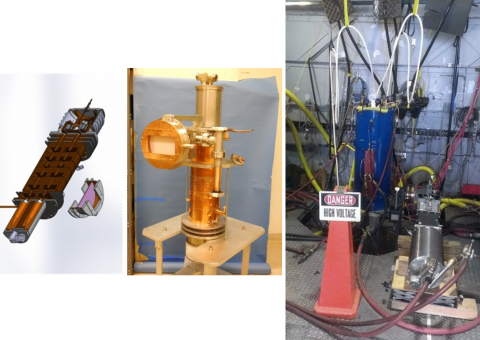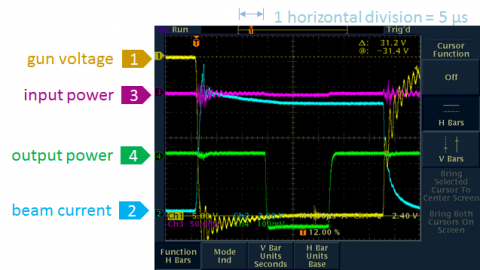A research program of developing an L-band multi-beam klystron (MBK) with parameters relevant for a future International Linear Collider ILC is planned to be hosted at Beam Physics Lab. The chief distinction of this tube from MBKs already developed for ILC is its low operating voltage of 60 kV, a virtue that implies considerable technological simplifications in the accelerator complex. This MBK can be used as a high power RF source needed for future positron source for the applications of neutrino detector calibration as well.
To demonstrate the concept underlying the tube’s design, a six-beamlet quadrant (a 54ʺ high one-quarter portion of the full 1.3 GHz tube) was built and recently underwent initial tests, with main goals of demonstrating rated gun perveance, rated gain, and at least one-quarter—that is 2.5 MW—of the full rated power. These tests, with 10-15 µs RF pulses, produced output powers of up to 2.86 MW at an operating voltage of 60 kV with 56 dB gain and high efficiency, and showed acceptably small beam interception. Therefore, the klystron has already achieved more than its design output-power at 60 kV, albeit in short pulses. Our initial three-day conditioning campaign without RF drive (140 µs pulses at a 60 Hz repetition rate) was stopped at 53% of full rated duty because of time limits at the test-site; no signs appeared that would seem to prevent achieving full duty operation (i.e., 1.6 ms pulses at a 10 Hz repetition rate). Additional tests are required and are currently planned to commence by the end of 2016 using facilities being installed in the Yale University Beam Physics Laboratory. More details are described here.

